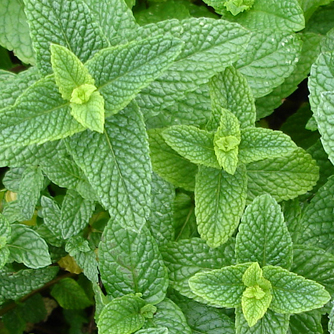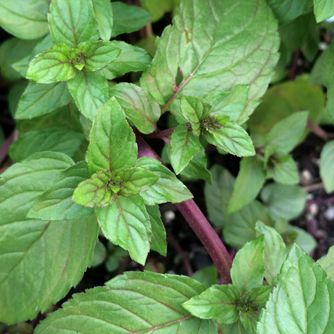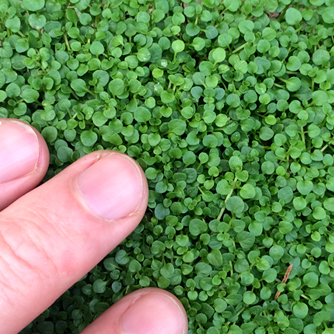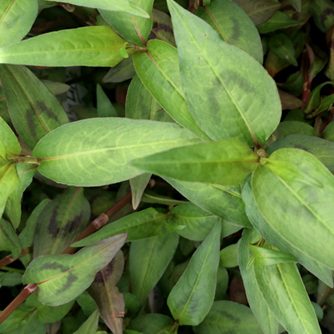Mint
BackMint is one of the most common herbs that everyone knows and loves. It’s perfect in a sauce for lamb dishes, scattered through salads for extra freshness or just chopped and placed in iced water for a refreshing drink on hot summer days. It is certainly a versatile herb to have growing in the garden.
Mint (Mentha spp) belongs to the Lamiaceae family which are known for their square stems and strong aromas. There are many varieties to choose from so why not have a bit of fun growing and using peppermint, spearmint, apple mint, chocolate mint or even ginger mint? The spicy Vietnamese mint (Persicaria odorata) is technically not a true mint but enjoys the same growing conditions as other mints. It also makes a great addition to Asian food!
How To Grow Mint
The best growing conditions for mint involves moisture and shade. Give your mint morning sun, afternoon shade and moist soil that’s loaded up with plenty of organic material. In these conditions your mint will take off like wildfire. Be warned that mint does like to spread via underground stems known as rhizomes and can become weedy if there is plenty of moisture present. Some people grow mint in pots to avoid this problem.

Common mint
It is a difficult plant to grow from seed but very easy to grow from cuttings. Simply take a piece of mint, remove the lower leaves and place it in a glass of water. As sure as eggs within a week small white roots will appear in the water! Wait another week so that the roots are just that bit stronger and then plant out in a pot or directly into the garden. Keep well watered until the cutting establishes.
Fertilising
Mint can survive with minimal fertilsing provided it gets plenty of moisture. If however you want plenty of lush mint leaves you’re going to need to fertilise on top of generous watering. A fortnightly application of OCP eco-seaweed with OCP eco-aminogro will produce loads of tasty growth which you can keep picking and use in the kitchen.
Pruning
Pruning isn’t usually needed if you’re regularly picking stems for cooking. However sometimes clumps of mint can get tired with lots of old tough growth (especially if it hasn’t been fed or watered it enough). If this happens you can ruthlessly prune the stems down to the ground which encourages new shoots to develop. Be sure to fertilise and water afterwards.
If the clump spreads too far then you’ll need to dig out the underground runners. Do this semi-regularly to contain the plant or consider growing it in a pot.

Chocolate mint
Pest & Disease problems for Mint
Mint is a tough herb but it can still suffer from a few problems from time to time.
- Mites, whitefly and aphids – spray with a horticultural oil as the first sign of these pests before their numbers explode.
- Powdery mildew - this disease will commonly attack the foliage with a white powdery coating and should controlled with an organic fungicide.
- Rust - is less common but watch for small brown markings on leaves as a telltale sign. Spray with an organic fungicide as required.
- Caterpillars - these hungry guys are guaranteed to turn up at some stage. Watch regularly for eaten leaves and then closely search your plant to pick off the caterpillar(s).

The tiny Corsican mint (Mentha requienii) makes a fragrant groundcover in moist areas

The spicy Vietnamese mint (Persicaria odorata)


